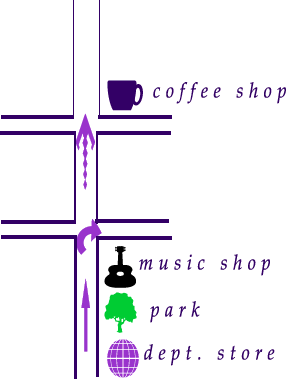Directions lesson idea

1 Elicit answers and vocabulary
Car get in or get on ??
Bus get in or get on…..?
Road (look at the map..)
elicit vocabulary…
go along, up, down, cross, go past, turn right…etc.
eg. “I want to go from ….to………..so first I………”
Building elicit vocab such as “take a lift”
……………”go upstairs”…….escalator…… “in front of” etc. ..
through a mini role pay….you as ignorant customer in department store and a student as information assistant.
2 Speaking in groups
Choose yourself as “First” and 4 other capable students to be:
Next, Then, After that, Finally
1. Model a situation
“First, go to the bus stop opposite….” (some place everyone knows)….the “Next” student picks up the story……. they can go anywhere
2. Model another situation
“First go into…”( a building ie. airport, hotel , department store)
3. Finally, put the students in groups to do the above……..
First,…….
Next,……..
Then,……..
After that,…..
Finally,….…




